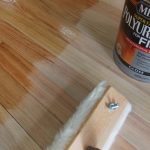Can You Put Polyurethane Over Vinyl? Know the Facts
Vinyl is extremely popular for transferring designs onto many surfaces, especially wood. When you finish applying vinyl decals, protecting the surface becomes a major concern. As polyurethane is one of the most popular sealing materials, the next question is obvious.
Can you put polyurethane over vinyl? Yes, you can put polyurethane over vinyl, and it will stick to the vinyl. But you need to prepare the vinyl surface for polyurethane to stick to it. So, you need to have a clear idea of how to apply polyurethane over vinyl.
In this guide, you will learn everything about applying polyurethane over vinyl. Let’s get started.
Can You Put Polyurethane Over Vinyl?
Polyurethane is a kind of resin, and different kinds of sealants are made from it through step polymerization. These sealants easily stick to rough surfaces like wood.
But when you cover the surface with vinyl decals, the roughness gets reduced. Vinyl decals are very smooth, which instigates the question, will vinyl stick to polyurethane?
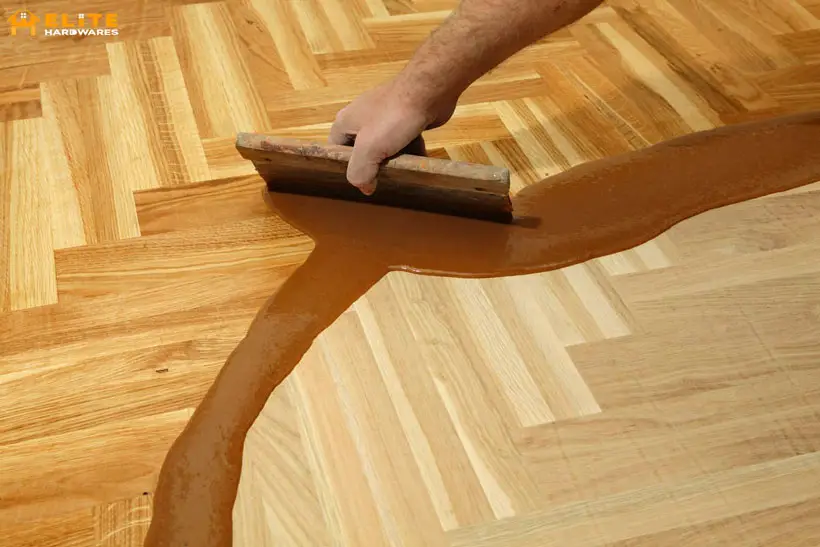
You can put polyurethane over the vinyl surface. But, preparing the vinyl surface for polyurethane is a must. This can be done by sanding the surface a bit. After sanding, polyurethane can grip the surface well and stick to it for longer. But sanding vinyl surfaces might not always be a good idea as it reduces the shine of the vinyl surfaces.
A better way is to use bonding primers to prepare the surface. These primers work like glue to bond the vinyl decal and polyurethane coat. As a result, the polyurethane coat lasts for longer without peeling off.
What Are the Types of Polyurethane for Vinyl?
Polyurethane sealants provide very tight seals. Plus, they have good adhesive properties and high chemical resistivity. The scratch resistance of polyurethane is also high. Depending on the base material, we divide them into two categories.
- Water-Based: This type of polyurethane is mostly transparent with a lower odor. As they are very thin, the drying time is fast. You can use them on surfaces where the water contact is low to zero. But as water-based polyurethane is thin, you need to apply multiple coats to get the right finish.
- Oil-Based: When you need a heavy-duty finish, oil-based polyurethane is the right choice. This is thicker than its water-based counterpart, so you might need to apply fewer coats. But working with oil-based polyurethane takes more time because it dries slowly. It also has more odor than water-based polyurethane.
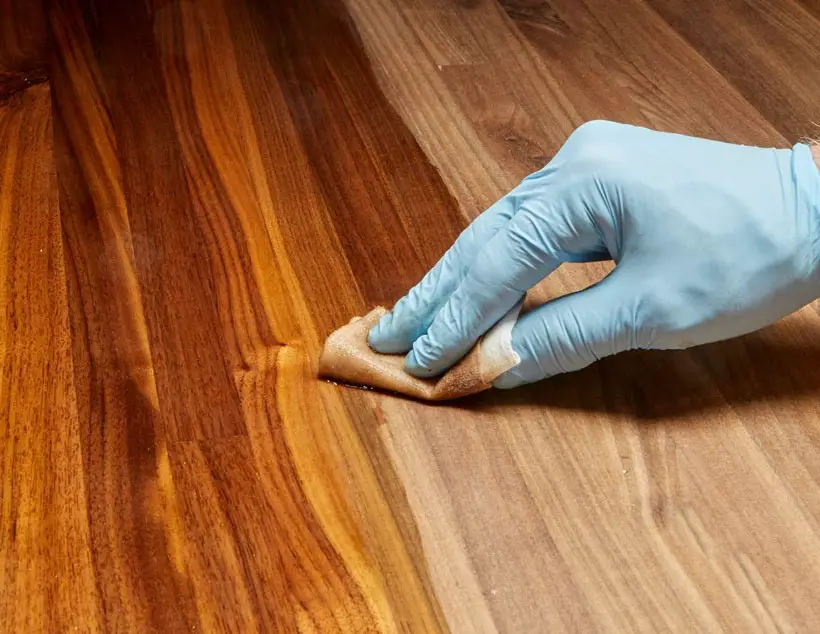
We can again categorize polyurethane depending on its final appearance or luster. Here it goes.
- Matte: If you choose matte polyurethane, the coating will give the most natural finish. But it is more prone to dust or scratches, so you might not want it on a surface that is regularly used.
- Satin: With a bit of sheen in the finish, satin is great for floors. They catch less dirt than matte polyurethane and aren’t as shiny as gloss polyurethane.
- Gloss: It is suitable for surfaces where you need the highest sheen. For example, you might use gloss polyurethane for kitchen cabinets. Shiny surfaces will keep water from soaking into the surface.
How to Prepare Vinyl Surface for Polyurethane?
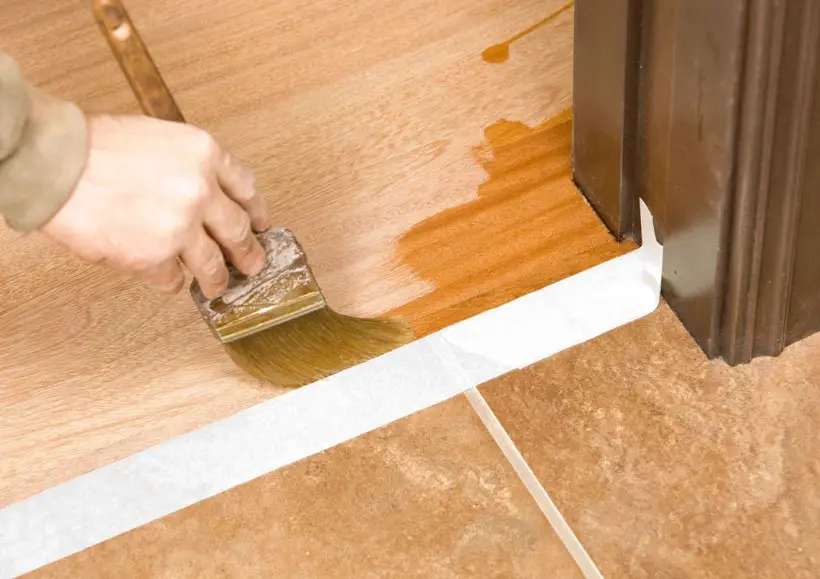
Before you use polyurethane on vinyl, you need to make the surface ready. Follow these steps to prepare the surface.
- Step 1: Lightly sand the vinyl surface with 80-grit sandpaper. It will make the surface more suitable for applying bonding primer.
- Step 2: Take a spray can of a bonding primer and shake the can well. Then, spray a thin coat of bonding primer on the surface.
- Step 3: Wait for the primer to dry and apply another coat of bonding primer.
The vinyl surface is now ready for applying polyurethane. Let’s move on to that process.
By the way, you should first test polyurethane on a similar surface prepared before. If the result is satisfactory, go to the next step.
How Do You Put Polyurethane Over Vinyl?
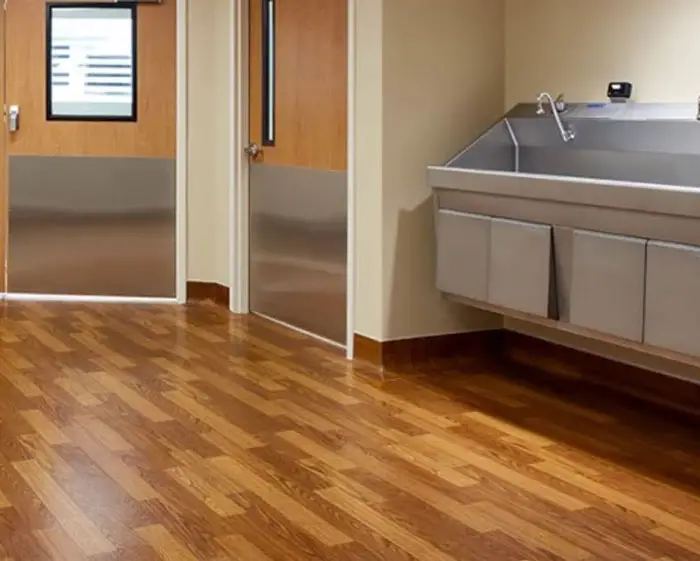
We will now go over the steps of applying polyurethane over vinyl. Follow the process precisely if you want to DIY the finish.
- Step 1: Choose the right type of polyurethane depending on the target surface. Read the instructions on the label before applying polyurethane.
- Step 2: Apply a thin coat of polyurethane over the vinyl surface. If the vinyl is water-based, it will dry quickly, and you can start the next step soon. For oil-based vinyl, you need to wait about 24 hours.
- Step 3: Once the previous coat is dry, apply another coat of polyurethane. You might need to repeat this step three or four times if you use water-based polyurethane.
Can You Put Polyurethane Over Cricut Vinyl?
Cricut vinyl is also suitable for polyurethane if you prepare the surface correctly. They might need a bit more preparation as cricut vinyl surfaces are very smooth.
But if you sand the surface and apply the bonding primer correctly, polyurethane will stick to Cricut vinyl.
If you’re considering applying polyurethane over vinyl surfaces, our article on can you put polyurethane over latex paint might provide insights that could help guide your decision. Additionally, if you’re exploring the differences between lacquer, varnish, and polyurethane finishes, our guide on lacquer vs. varnish vs. polyurethane comparisons is here to offer assistance. We understand the importance of achieving optimal finishes and addressing specific application scenarios, and our comprehensive resources are designed to help you navigate and make informed decisions for your woodworking endeavors.FAQs
Check answers to some commonly asked questions about polyurethane over vinyl.
Q: Can you put polyurethane over vinyl flooring?
A: Yes, you can. Satin finishes are great for vinyl flooring. And you need to choose water-based polyurethane for flooring. If you apply polyurethane correctly, it will protect the vinyl flooring well.
Q: Are polyurethane and polyacrylic the same?
A: Though both are urethane sealants, polyacrylic typically has acrylic blended with urethane. Also, polyacrylic can’t be oil-based, but polyurethane can. So, they aren’t the same.
Q: Do polyurethane show tint over time?
A: If you use oil-based polyurethane, it might show a yellow tint over time. Though water-based polyurethane doesn’t have this problem, you might face similar effects if the polyurethane is exposed to UV.
Conclusion
Polyurethane sealants are widely used to coat different surfaces for prolonged protection and improved finish. But when it comes to vinyl decals, the situation becomes tricky. Vinyl has a smooth surface which doesn’t seem suitable for polyurethane.
So, can you put polyurethane over vinyl? Yes, but only if you prepare the surface first. The vinyl needs a bit of sanding and two coats of bonding primer to be compatible with polyurethane. Once you prepare the surface properly and choose the right type of polyurethane, it will stick to the vinyl surface very well.




